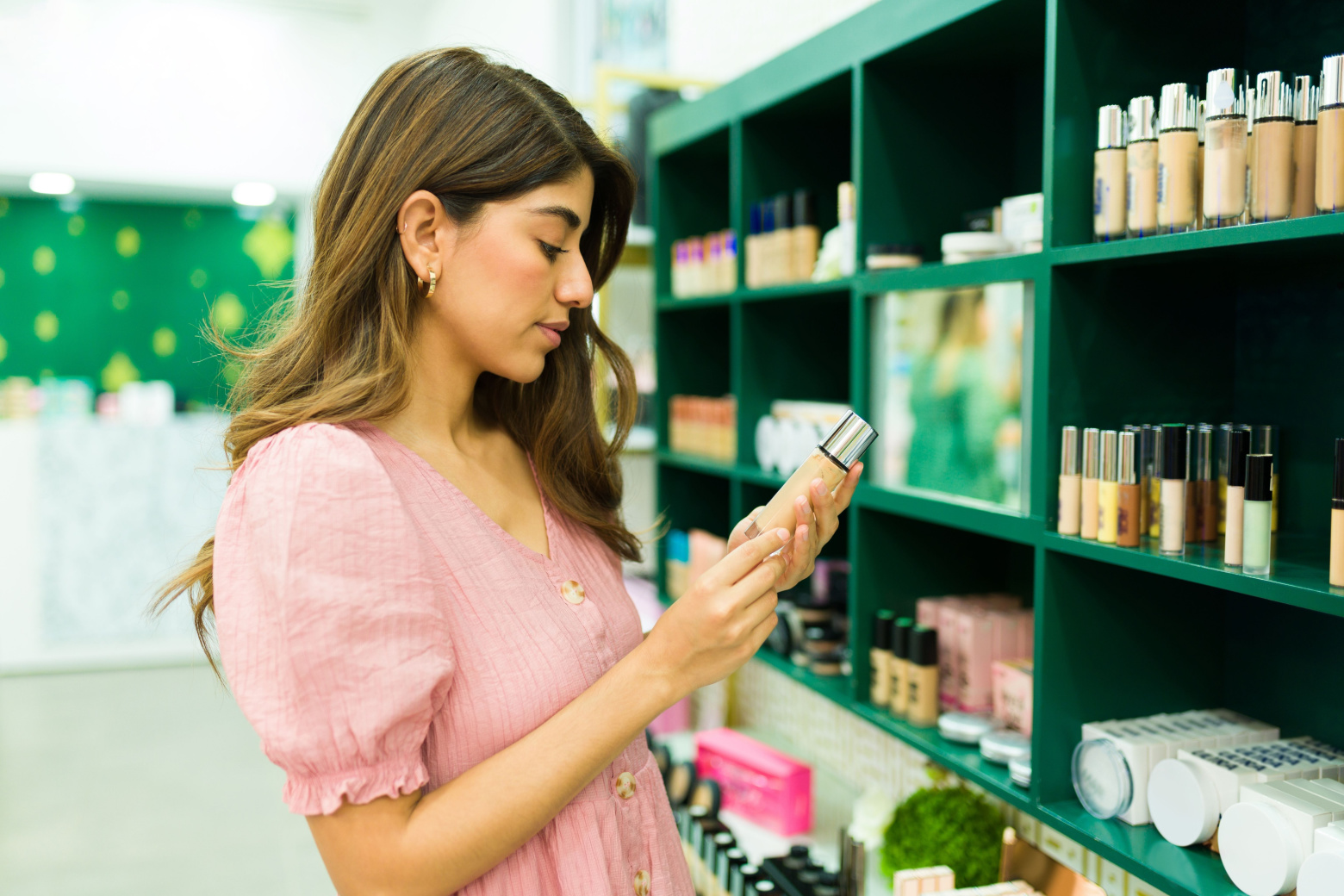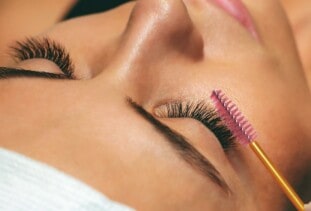Although inflation has been trending downward, prices are still not what we enjoyed in early 2022. Add to the mix a looming recession and massive layoffs threatening people’s finances , Americans are finding themselves juggling priorities to make ends meet. Will your splurge this month be lash extensions or a carton of eggs?
As evolving beauty and fashion trends bring new products to the market and clash with economic peaks and valleys, we wanted to see how this turbulence affects spending on beauty and fashion items. We were also curious about what Americans are doing to keep up their looks while staying budget friendly. So, we surveyed 1,011 Americans about their beauty and fashion spending habits to see where they’re cutting back on, how they’re cutting back, and what they can’t do without.
Key Findings
- Of those who plan to buy a pricey item in 2023, 75% of people will save up for it rather than use credit.
- When it comes to fashion and beauty items, 64% say inflation has impacted their spending in that category.
- Before buying, 1 in 3 people price check every purchase either online or in other stores.
How Inflation Has Impacted Beauty and Fashion Spending
When it comes to fashion and beauty, 64% say inflation has impacted their spending. Still, Americans are making room in their budget for them despite the higher prices.
Because beauty and fashion trends are continually changing, it’s no surprise that consumers are constantly purchasing new items, and as items run low, replenishing your supply can be as simple as a few clicks online. Whether shopping online or popping in-store for a purchase, our respondents revealed that at least monthly, 45% shop for beauty items, and 38% shop for fashion items.
While maintaining your look is important, many plan to decrease their spending this year, even when it comes to fashion and beauty items. Survey data shows that 54% plan to decrease their spending on fashion, and 48% plan to decrease their spending on beauty products.
However, just because consumers are planning to spend less, that doesn’t always mean they will purchase fewer items — many are just using money-saving strategies. To combat inflation, most (75%) say they look around for the best deal while shopping, but other money-saving strategies have a strong following as well. Many shop clearance for good deals (58%), while others search out gently used items (31%) or dupes (also known as an affordable alternative of a product) (21%) they can purchase.
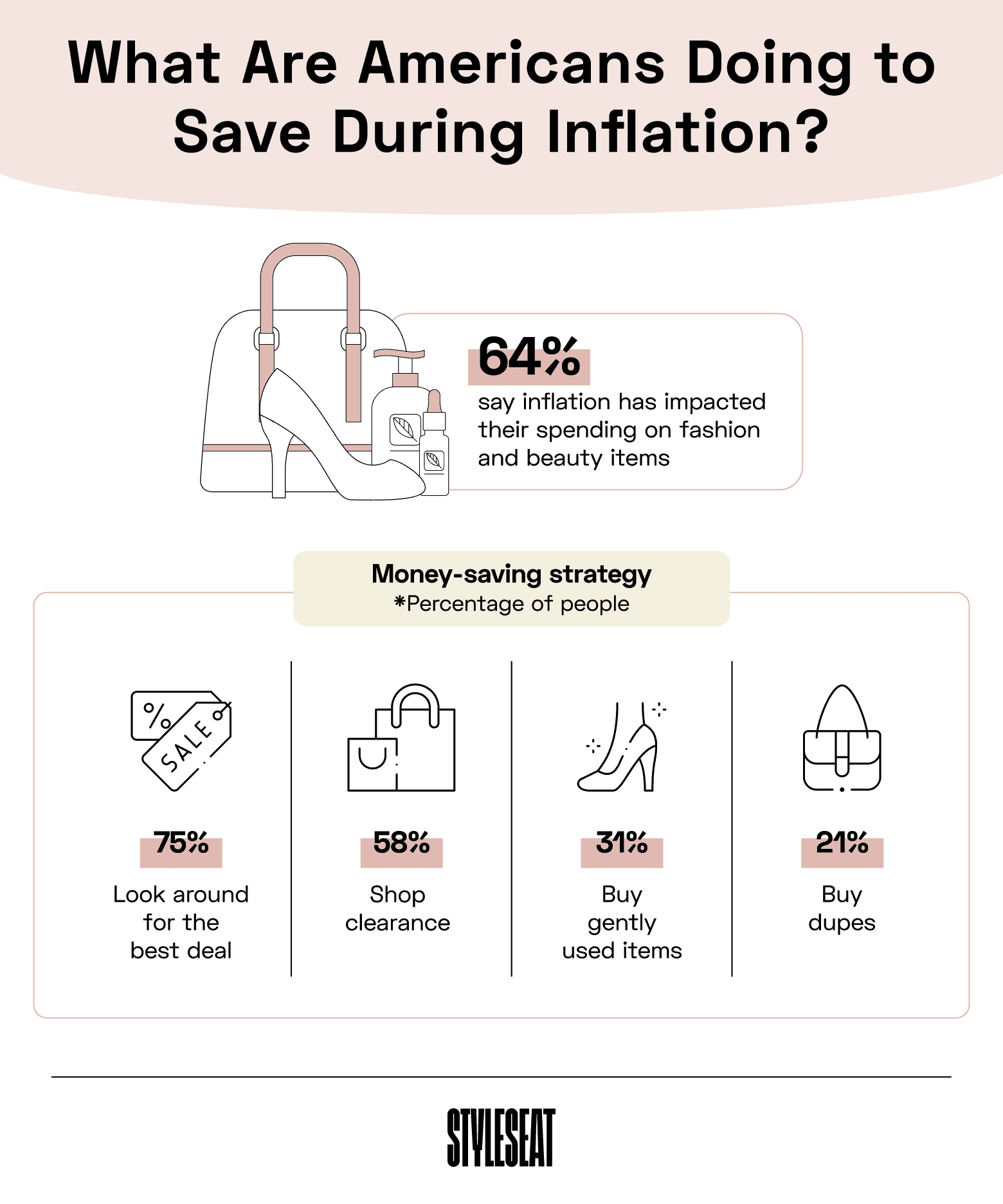
The Fashion Items Americans Value Most
Conscious spending means you’re intentional with where you cut costs so you can afford the things you prioritize. While shopping for items, you may be a conscious spender if you’re considering whether something is too expensive, a great deal, or not worth the price.
If you’re looking up how other stores price the same item, then you’re practicing another form of conscious spending: price checking. If you’re price checking, you’re not alone, as 1 in 3 people say they price check every purchase online or in other stores before buying.
You don’t have to be on the cutting edge of fashion to have particular items prioritized in your closet. You probably have at least one item you consider worth splurging on, while others have you more reluctant to shell out some cash. Our survey respondents prioritized two categories: apparel (58%) and footwear (30%). The other fashion items trailed far behind.
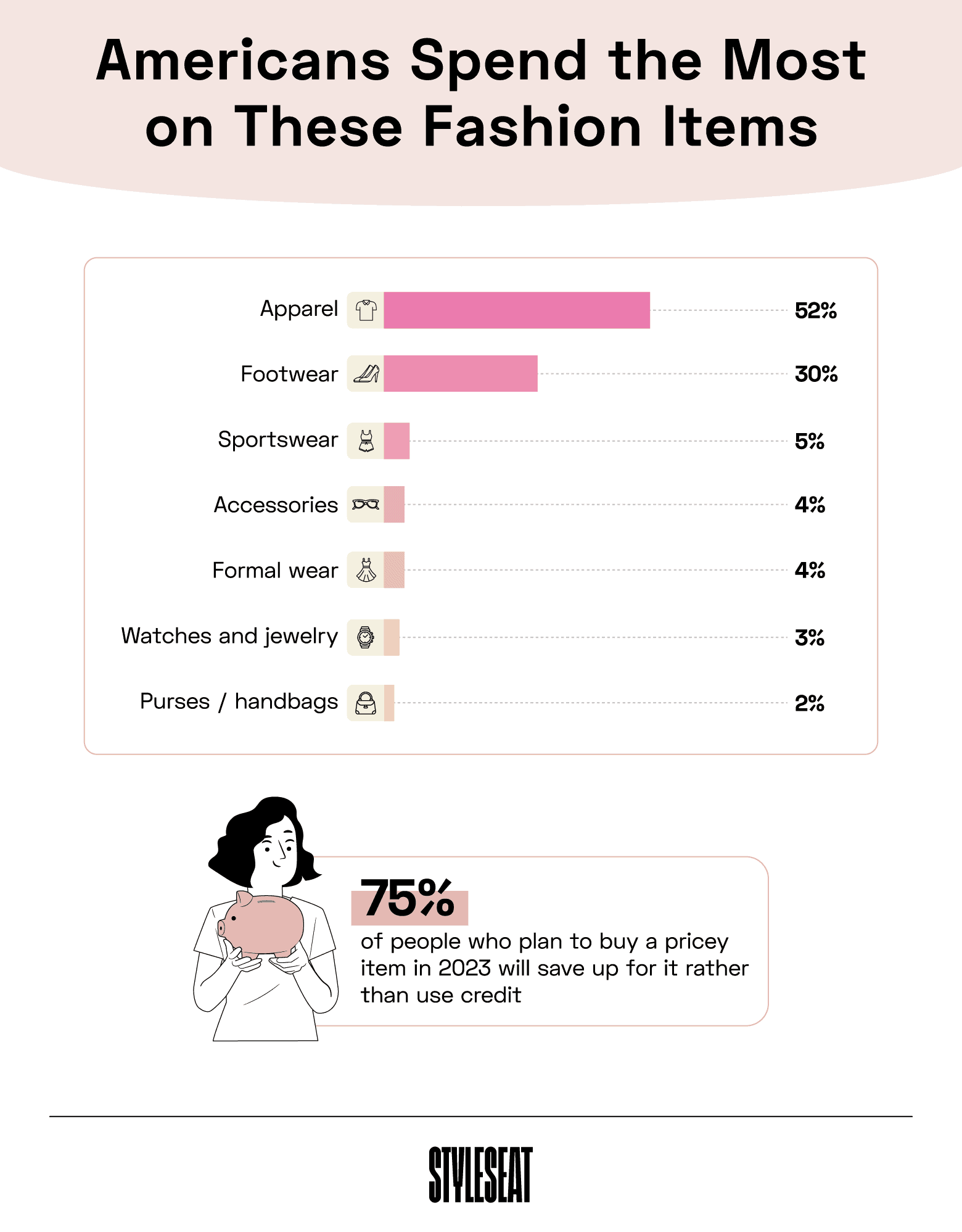
Even with conscious spending, sometimes purchasing the item you want means going into debt, but this year, Americans aren’t looking to borrow. Of those who plan to buy a pricey fashion item in 2023, 75% have said they’ll save up for it rather than use credit. When it comes to overall budgets for fashion, 69% plan on spending $50 or less per month on fashion items in 2023.
The Beauty Items and Services Americans Would Prioritize
Fashion isn’t the only thing consumers know how to prioritize. When your bank account is running low, there are things you have to do without. Our survey revealed the beauty items and services people would cut back on first if finances were tight.
The last item people would cut back on? Lashes. Fake lashes have been a staple in western culture since the 1950s, but in the early 2000s lash extensions became a new norm — which our survey makes clear. Although lashes are the last beauty item or service consumers would cut out of their budget, a person’s face is clearly a priority. Maintaining a flawless smooth face is so essential that fillers are the second-to-last beauty service people would cut back on.
When it comes to the budget chopping block, our respondents consider makeup the first thing to go, but with so many items in the makeup industry, cutting back doesn’t mean people would go without makeup completely. Staple beauty services also topped this list of things to go, with nail salon and hair salon services ranked in the top three. With hair care (#4) and skin care (#5) rounding out the top five for beauty items or services to cut.
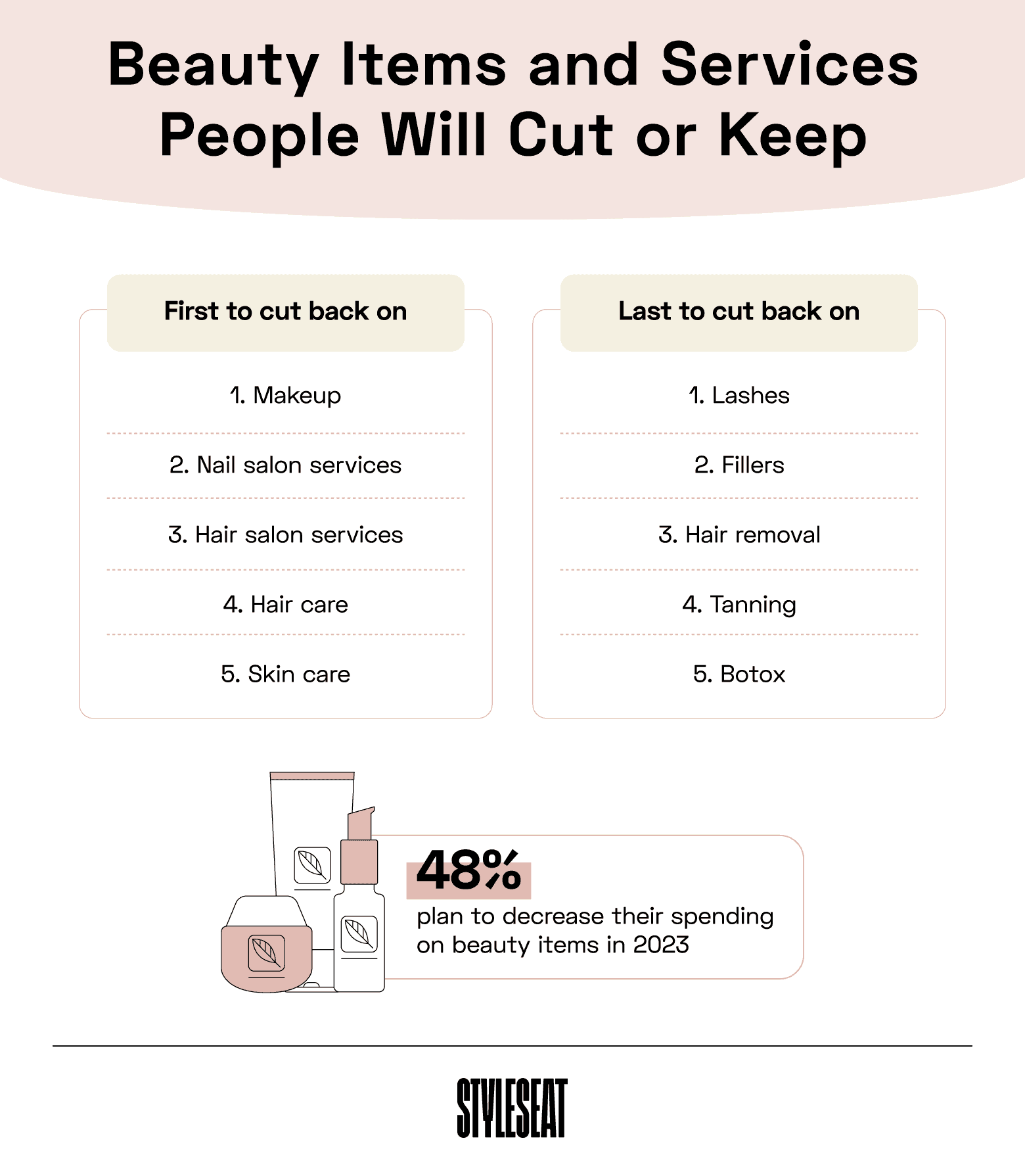
How Americans Save Money on Fashion and Beauty Items
Cutting back on items or services isn’t the only way Americans plan to save money. Our survey revealed the tactics shoppers are using regardless of inflation, to get their look for less.
- 71% of respondents have used a cashback site to save money on fashion or beauty items.
- 64% of Americans have looked for dupes to get their high-end beauty and fashion items for less.
- 58% of people reported buying their designer items from an outlet store, clearance section, thrift shop, or online marketplace.
While Americans can find some hidden gems shopping secondhand, our survey revealed the items people tend to steer away from or seek out when purchasing at a thrift store. The most standard item you can find at every thrift store, apparel (71%), was the most popular item to purchase and was closely trailed by additions to your outfit, accessories (50%), and purses and handbags (37%). The top three least popular items to buy at a thrift store were all from distinct categories, yet they were almost in a three-way tie, footwear (29%), formal wear (30%), and sportswear (30%).
| Most popular to buy at a thrift store | Least popular to buy at a thrift store |
|---|---|
| 1. Apparel – 71% | 1. Footwear – 29% |
| 2. Accessories – 50% | 2. Formal wear – 30% |
| 3. Purses / handbags – 37% | 2. Sportswear – 30% |
Despite these money-saving strategies, 79% of Americans admitted to making an impulse beauty or fashion purchase, and women (89%) took part in this more than men (69%). Some make purchases they can’t yet afford, with1 in 4 (28%) of our respondents using a “buy now, pay later” service when purchasing fashion items.
Conclusion
Although inflation is impacting consumer spending, Americans have proven themselves to be savvy shoppers who can afford their fashion and beauty priorities, and many use the internet to their advantage to price-check beauty items and services. You can do the same by using a website like StyleSeat. To update your look at the price you can afford, StyleSeat can help you find a beauty Pro in your budget and area with just a few clicks.
Methodology:
On January 16, 2023, we surveyed 1,011 Americans about their beauty and fashion spending habits. Respondents ranged in age from 18 to 76 years old, and were 53% female, 46% male, and 1% nonbinary.
